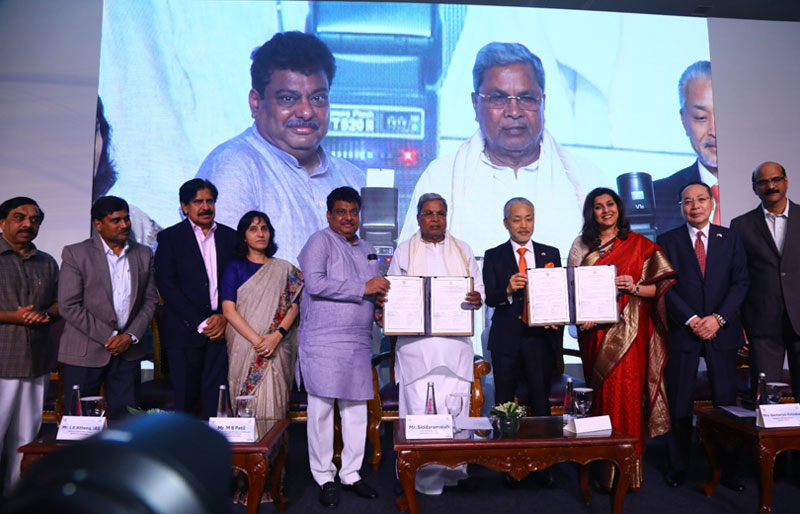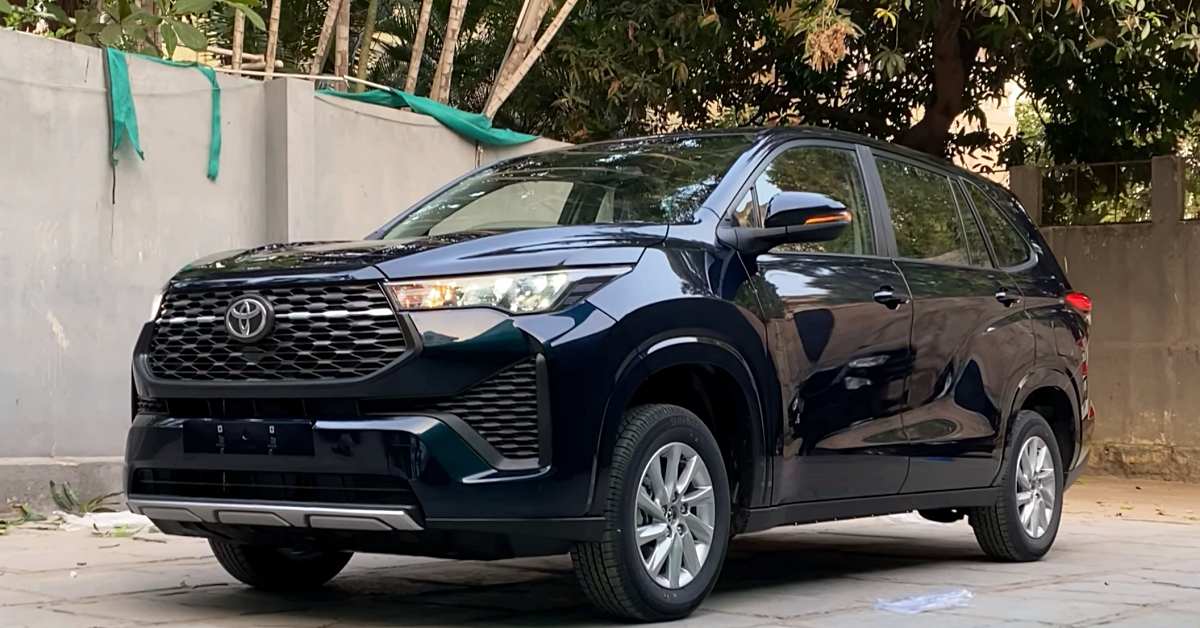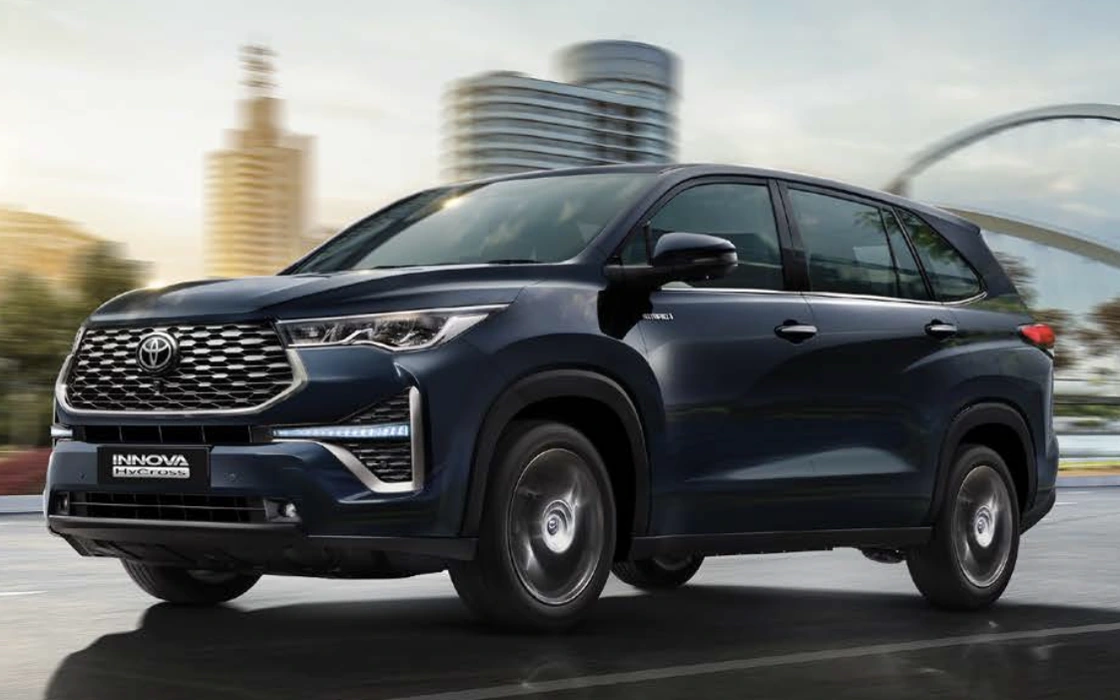In the ever-evolving automotive landscape, Toyota stands as a beacon of innovation and resilience. This comprehensive exploration delves into the intricate details of Toyota’s recent ventures, from the enduring waiting periods for popular models like the Innova Crysta and Hycross to the strategic announcement of a new manufacturing plant in India. Additionally, we unravel the distinctive allure of the Innova Hycross GX Limited Edition. Buckle up as we embark on a journey through Toyota’s dynamic and impactful presence in the automotive world.
Toyota Innova Crysta Waiting Period: A Confluence of Demand and Legacy
The Toyota Innova Crysta, marking its return earlier this year, has not merely re-entered the market; it has rekindled a fervor among private and commercial buyers. Despite its seven-year legacy, this MPV boasts a remarkable waiting period, extending up to nine months at most locations. The GX and VX variants emerge as the frontrunners, commanding waiting periods that mirror the unparalleled demand for this stalwart model.

The 2023 update introduced a BS6 Stage 2-compliant engine, aligning with Toyota’s commitment to environmental standards. Noteworthy is the strategic discontinuation of the diesel-automatic option, a move aimed at directing private buyers toward the newer and more advanced automatic-only Innova Hycross. While the Hycross has enticed some buyers, especially those seeking fuel efficiency, the Crysta remains a preferred choice, particularly for those relying on chauffeurs.
Toyota’s efforts to tackle the high order backlog include the implementation of a third shift at its manufacturing plant. This proactive approach has resulted in enhanced delivery capabilities, mitigating the challenges posed by the unprecedented waiting periods. The current sales data showcases the enduring popularity of the Innova Crysta, with an average of around 2,500 units sold per month between January and June 2023.
Toyota Announces Third Manufacturing Plant in India: Paving the Way for Expansion
In a strategic move to fortify its manufacturing capabilities and cater to the escalating demand, Toyota has formalized plans for a third manufacturing plant in India. The Memorandum of Understanding signed with the government of Karnataka signifies a pivotal investment, estimated at around Rs 3,300 crores. Situated near the existing plants in Bidadi, near Bangalore, this upcoming facility is poised to amplify Toyota’s production capacity by an additional 1 lakh units per annum.

The significance of this announcement goes beyond meeting current demands; it reflects Toyota’s foresight and commitment to the Indian market. The new plant is slated to be operational by 2026, heralding an era of expanded production capabilities and employment opportunities, with an estimated 2,000 new jobs in the pipeline.

Innova Hycross GX Limited Edition: Elevating Style and Exclusivity
Amidst the dominance of hybrid variants, Toyota introduces a captivating variant to the Innova Hycross lineup — the GX Limited Edition. Priced between Rs 20.07 lakh to Rs 20.22 lakh (ex-showroom), this edition is strategically designed to infuse style and exclusivity into the non-hybrid segment. Its availability for a limited period, until December or while stocks last, adds a sense of urgency and exclusivity to this iteration.

The exterior enhancements are subtle yet effective, featuring a new chrome garnish on the grille and faux silver skid plates on the front and rear bumpers. While based on the lower-tier GX trim, this edition misses out on certain features present in higher trims but compensates with unique cosmetic updates. The interior undergoes more substantial changes, boasting a new soft-touch, chestnut brown finish for the dashboard and door trims. Additionally, a faux wood trim around the window controls and dual-tone black and brown finish for the fabric seat covers add a touch of sophistication.
The GX Limited Edition is available in both 7-seater and 8-seater configurations, ensuring flexibility to cater to diverse consumer preferences. It represents Toyota’s strategic endeavor to make the non-hybrid variant more appealing to a broader audience during its limited availability.
Toyota Innova Hycross Waiting Period: A Balancing Act Amidst Semiconductor Challenges
The Toyota Innova Hycross, introduced in December 2022, has garnered significant attention and demand in the market. However, the journey for potential buyers has not been without challenges, as waiting periods for both the petrol and hybrid variants continue to test patience.

Hycross Hybrid Waiting Period: Navigating Semiconductor Challenges
The hybrid variant, available in VX, VX(O), ZX, and ZX(O) trims, faces a waiting period ranging between 9 to 12 months. The global semiconductor shortage has impacted the delivery of higher variants, leading to a decrease in deliveries. Despite Toyota’s efforts to ramp up production, the waiting periods for the VX and VX(O) trims persist.
The Hycross Hybrid, equipped with a 184hp, 2.0-litre strong-hybrid engine, is a testament to Toyota’s commitment to environmental sustainability. Paired with an automatic transmission, the hybrid variant offers a claimed fuel efficiency figure of 23.24kpl, appealing to eco-conscious consumers. The challenge lies in meeting the robust demand for these eco-friendly models while navigating the intricate web of semiconductor supply constraints.
Hycross Petrol Waiting Period: Balancing Demand Dynamics
While the petrol-powered Hycross, available in G and GX trims, experiences a comparatively slower demand, it still maintains a decent market presence. Toyota sold approximately 3,387 units of the Hycross petrol between January and June 2023, averaging about 565 units per month. Despite this, customers looking to book the Hycross petrol today face a waiting period of approximately 4 to 6 months, underscoring the sustained interest in this variant.
The Hycross petrol features a 172hp, 2.0-litre petrol engine paired with a CVT gearbox. While not as sought after as its hybrid counterpart, it caters to a segment of consumers seeking a more traditional powertrain. The waiting period dynamics reflect the delicate balance Toyota strives to maintain between the two powertrain options, considering varying consumer preferences.
Global Semiconductor Shortage: A Persistent Challenge
The overarching challenge influencing waiting periods for the Hycross variants is the global semiconductor shortage. Despite Toyota’s announcement to ramp up production in April 2023, the adverse effects of the shortage continue to linger, particularly impacting the availability of the top-spec hybrid variants. While the brand has recorded commendable average monthly sales of about 2,720 units of the hybrid between January and June 2023, the semiconductor bottleneck remains a significant factor affecting the timely delivery of certain trims.
Toyota’s commitment to environmental sustainability and technological advancement is evident in the Hycross lineup. As the brand grapples with external challenges, including semiconductor shortages, it remains dedicated to addressing waiting periods and delivering high-quality vehicles to meet customer expectations.
Conclusion
In conclusion, Toyota’s automotive journey unfolds with resilience and innovation, addressing waiting periods, expanding manufacturing capabilities, and introducing limited edition charisma. Despite challenges like waiting periods and semiconductor shortages, Toyota remains committed to delivering high-quality vehicles that align with environmental standards.
Frequently Asked Questions
1. What is the waiting period for Toyota Innova Crysta?
The waiting period for popular variants like GX and VX of the Innova Crysta can extend up to nine months due to high demand.
2. How is Toyota tackling the waiting period for Innova Crysta?
Toyota has implemented a third shift at its manufacturing plant to enhance delivery capabilities and address the high order backlog.
3. What is the significance of Toyota’s third manufacturing plant in India?
The new plant, operational by 2026, reflects Toyota’s commitment to the Indian market, aiming to increase production capacity and create employment opportunities.
4. Tell us about the Toyota Innova Hycross GX Limited Edition.
Priced between Rs 20.07 to Rs 20.22 lakh, this limited edition of the Innova Hycross aims to infuse style and exclusivity into the non-hybrid segment with unique cosmetic updates.
5. What are the waiting periods for Toyota Innova Hycross variants?
The hybrid variant faces a waiting period of 9 to 12 months, primarily due to the global semiconductor shortage. The petrol variant has a waiting period of approximately 4 to 6 months.
6. How does Toyota balance demand for Hycross petrol and hybrid variants?
While the hybrid variant faces higher demand, the petrol variant maintains a decent market presence. Toyota strives to balance production to cater to varying consumer preferences.
7. What is the global semiconductor shortage, and how does it affect Toyota?
The global semiconductor shortage is a persistent challenge affecting the timely delivery of certain Hycross variants despite Toyota’s efforts to ramp up production.
8. What are the features of the Hycross Hybrid?
The Hycross Hybrid features a 184hp, 2.0-litre strong-hybrid engine, automatic transmission, and a claimed fuel efficiency of 23.24kpl, appealing to eco-conscious consumers.
9. How many units of Toyota Hycross hybrid were sold between January and June 2023?
Toyota recorded an average monthly sales of about 2,720 units of the hybrid variant during this period.
10. How does Toyota demonstrate its commitment to environmental sustainability?
Toyota demonstrates commitment through the introduction of eco-friendly models like the Hycross Hybrid, despite challenges posed by the global semiconductor shortage.